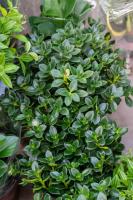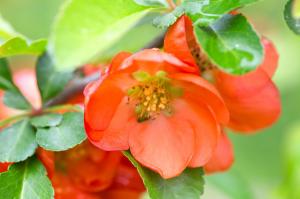How Can Plants Affect Water Cycle?
Plants are critical components of the water cycle, as they play a vital role in regulating the movement of water throughout the ecosystem. They interact with rainfall and the atmosphere in various ways, thereby affecting the water cycle. In this article, we will explore how plants affect the water cycle and why it is essential to have a healthy amount of vegetation in any ecosystem.
Vaporization and Transpiration
One of the most significant ways that plants affect the water cycle is through vaporization and transpiration. During the process of photosynthesis, plants absorb water through their roots and use it in combination with carbon dioxide and energy from the sun to produce oxygen and glucose. As a result, water molecules are released into the air as vapor, which in turn creates a rich environment for the formation of clouds and subsequent precipitation.
Additionally, plants release water vapor through tiny pores in their leaves called stomata during a process known as transpiration. The water vapor then rises, cools, and condenses into clouds, eventually falling back to the earth in the form of precipitation, completing the water cycle.
Preventing Erosion and Flooding
Another crucial way that plants affect the water cycle is by preventing erosion and flooding. Large amounts of water are often lost to erosion, which can potentially lead to the contamination of water resources. Plant roots help to stabilize soil and prevent erosion, allowing water to seep into the soil and flow into underground sources.
Moreover, vegetation helps absorb excess water during heavy rainfall and release it slowly back into the environment. This process helps to prevent flooding and its damaging effects, such as soil erosion and property damage.
Improving Water Quality
Plants also contribute to the quality of the water in a given ecosystem. As water flows through the soil, it comes into contact with plant roots, which take up and filter out pollutants and excess nutrients. This process, known as phytoremediation, ensures that pollutants are not carried downstream, where they can harm wildlife and humans.
Furthermore, vegetation provides habitats for diverse populations of beneficial bacteria and other microorganisms that help break down pollutants in the water. By filtering and purifying water, plants ensure that it is safe for human and animal consumption.
Conclusion
Plants are an essential component of the water cycle, as they regulate water movement, prevent erosion and flooding, and improve water quality. They play a crucial role in ensuring the sustainability of ecosystems worldwide. Therefore, it is crucial to protect and maintain healthy vegetation cover in any ecosystem, as it ensures that the water cycle functions as efficiently and effectively as possible.

 how many times do yo...
how many times do yo... how many planted tre...
how many planted tre... how many pine trees ...
how many pine trees ... how many pecan trees...
how many pecan trees... how many plants comp...
how many plants comp... how many plants can ...
how many plants can ... how many plants and ...
how many plants and ... how many pepper plan...
how many pepper plan...





























